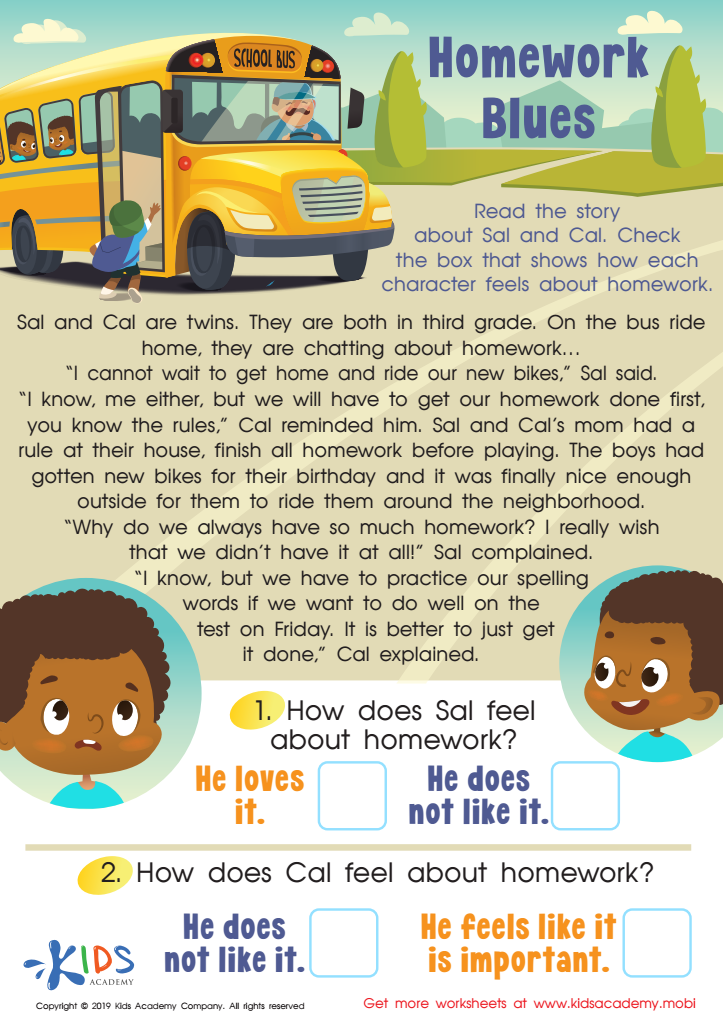Worksheets for Ages 5-7 - Page 3
2423 filtered results
-
From - To


Find the Setting Worksheet


Where Does It Happen? Worksheet


When Does It Happen? Worksheet


Sentences That End in an Question Mark Worksheet


Sentences That End in a Period Worksheet


Sentences That End in an Exclamation Mark Worksheet


Beginning Sounds Worksheet


Towns Worksheet


Nonfiction Features Worksheet


Nonfiction Captions Worksheet


Rhyming Words in Poems Worksheet


Identifying Poems Worksheet


Finish Rhyming Poem Worksheet


Picture in Books Worksheet


Picture Books Worksheet


Draw a Line to the Picture Books Worksheet


Letter Spacing Practice Worksheet


Story Structure Worksheet


Setting of a Story Worksheet


Homework Blues Worksheet


Point of View Printable


Changing Feelings Worksheet


Character’s Feelings Worksheet


Special Day Worksheet
Parents and teachers should prioritize the educational development of children aged 5-7 because this period is critical for cognitive, emotional, and social growth. During these early years, children form foundational skills such as reading, writing, and basic mathematics, which are essential for future learning. Research shows that early intervention and support can lead to improved academic performance throughout their educational journey.
Furthermore, this age group is characterized by rapid brain development, making it an ideal time for instilling a love for learning. Engaging in interactive and playful learning experiences fosters curiosity and creativity, helping children build confidence in their abilities. Additionally, social skills developed during this time, such as sharing, cooperation, and communication, are vital for peer interactions and overall emotional well-being.
By investing time and resources into nurturing this critical stage of development, parents and teachers can significantly impact a child's trajectory, paving the way for lifelong learning and success. Moreover, early support can help identify and address any learning challenges, ensuring that all children have equal opportunities to thrive. Ultimately, fostering a positive and enriching environment for children ages 5-7 lays a strong foundation for their academic and personal growth.

 Assign to My Students
Assign to My Students



















